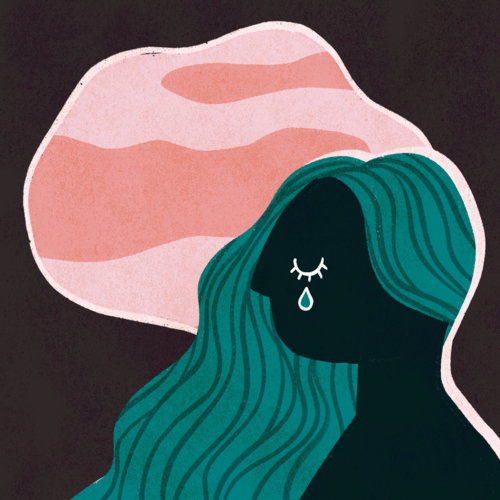Illness as Metaphor
Forty years after the publication of Susan Sontag’s landmark essay, the metaphor of contagion is more resonant than ever before.
Susan Sontag photographed in her New York City apartment by Jill Krementz.
Forty years ago, Susan Sontag published her landmark essay, “Illness as Metaphor,” with its revolutionary idea that illnesses — in context, tuberculosis (TB) and cancer — carried with them a host of metaphors that, far from helping the average person suffering from the disease to better understand their illness, actually interfered dramatically with exactly that process:
Any disease that is treated as a mystery and acutely enough feared will be felt to be morally, if not literally, contagious. Thus a surprisingly large number of people with cancer find themselves being shunned by relatives and friends and are the object of practices of decontamination by members of their household, as if cancer, like TB, were an infectious disease.
Sontag’s explicit goal is to get us to understand bodies as bodies, disease as disease. The mysteries and metaphors attached to TB and cancer range from the belief that the one only afflicts sensitive artists while the other is a literal warlike invasion or attack on the body by a foreign agent. Her point is razor-sharp, impossible to deny: the more we attribute emotions like anger, desire, or malice to the body’s natural processes, the less likely we are to treat or cure the disease itself. It was this “Romantic cult” of tuberculosis, Sontag claims, that allowed for the “TB myth” to “[survive] irrefutable human experience and accumulating medical knowledge for nearly two hundred years.”
Reading this, I was struck by the way we often, conversely, attribute the metaphor of contagion to our personal and cultural scenarios. For example: as a survivor, I know first hand–domestic abuse feels catching. Sometimes I wondered: was there a black cross slashed on our front door that I couldn’t see, marking our contagion? Our neighbors, a young couple with a newborn daughter, once friendly, had cut me off cold once they got a glimpse of my ex Will’s act in all its spectacular terror and danger. I could no longer flee across the parking lot of our apartment complex, my infant son in my arms, to cry on their couch — a temporary shelter. I imagined them after I left, smudging the house with sage, afraid their sweet domesticity would catch whatever gross disease had infected Will and I. That it was airborne.
The night before I finally left Will, I sat alone in the bedroom we shared, in a shitty apartment in Beaumont, Texas, a big town with a small mind. Hank slept in his crib; Will was passed out on the living room couch after yet another violent, Dilaudid-induced bender. He had stolen my cell phone. We had no house phone, and I had no one left to contact having abandoned my loving family back in my home state of New Jersey when they said, “Him or us.” I knew if I didn’t leave, I would die. Either quickly and horribly or slowly and miserably, like a tropical plant left in a room with very low light.
I knew this was no way to raise a child.
I stared at Facebook, blinking, panicked. In the right hand “Facebook chat” list of 2011, a familiar name popped up: Dawn. She had been at some of the Al-Anon meetings I’d attended, a tall, brash, smart woman. Later, I saw her hanging outside of the classroom where I was teaching a freshman seminar at the Lamar Institute of Technology, a local two-year college. We exchanged pleasantries, and she friended me on Facebook the next day.
I barely knew her. But I was desperate. I clicked on her familiar name and began to type: I need help — it’s an emergency … Sontag’s exhaustive survey and critique of the role tuberculosis played both in European and American literature, and for many of its significant authors, proves that these ideas were crucial to both popular culture and high-minded art from the 16th century until the mid-20th. Kafka, who suffered from TB, makes frequent appearances in Illness as Metaphor, writing to Max Brod that his “head and lungs have come to an agreement without [his] knowledge.” Later, he writes, “I’m mentally ill, the disease of the lungs is nothing but an overflowing of my mental disease.” Shelley writes to Keats that TB (“consumption”) was more “fond” of people who wrote “such good verses as you have done.” John Middleton Murray, describing Katherine Mansfield’s death of TB, says, “it was as though the exquisite perfection which was always hers had taken possession of her completely.”
In other words, to be “consumed” by TB in the 19th century was, in a word, hip. When Sontag writes about the 19th century trend to see the “tubercular look” as a fashionable precursor to the Duchess of Windsor’s famous adage that “One can never be too rich. One can never be too thin,” I can’t help but think that the natural descendent of all of this is the “waif look” of the 1990’s, the decade of my teenage years. I came of age spoon-fed — or perhaps force-fed — the idea that a woman who literally looked as if she was wasting away was the height of beauty. Self-inflicted illness, by the 1990s, was high fashion. I understood my healthy body as dull, blasé, and in need of sickness to correct it. Rereading Illness as Metaphor, I am struck by the sense that in addition to her desire to divorce illness from its metaphors, Sontag wanted us to see that those metaphors are often deeply classed and darkly gendered.
Sontag, writing Illness as Metaphor, was herself suffering from cancer. It would eventually kill her. As the book crescendos to a close, she tackles the idea of “psychologizing” a disease (cancer, specifically), writing that this “seems to provide control over the experiences and events (like grave illnesses) over which people have in fact little or no control.”
That terrible day in southeast Texas, Dawn, who rapidly became one of my dearest friends, helped me take the first steps to regain control of my life. She gave my son and me the temporary refuge and respite of her remarkable home and family — she is a biological mother of five who last year adopted twin boys whom she and her husband had fostered for most of their young lives. She found me a reputable lawyer who helped me get emergency sole custody. She made me call my parents. She put us on an airplane back to the frigid bosom of the U.S. Northeast where I began to build my life anew and from where we remain close friends, seven years later.
She saved our lives.
Which is why it is painfully ironic that I was poring over Illness as Metaphor for this piece when I got a text from Dawn that she had been diagnosed that day with Stage IV lung cancer which had metastasized to her spinal cord and lymph nodes.
Dawn, who is a healthy, non-smoking, 48-year old woman, visited her primary care physician with complaints of fatigue and shortness of breath a dozen times in the last year.
The response?
Depression.
Despite the fact that she is the least likely candidate for a depression diagnosis of any person I have ever met. She was a single mother at 16-years old who left home and triumphed, meeting her husband and raising their family of five. At the height of the agony I faced, trying to escape Will, she said, “We should just like, hijack some four-wheelers and take them out to the beach and drink margaritas all day like bad asses.”
Then, she took me for Mexican food and forced me to make a detailed list of everything I needed to do to keep my son and myself safe in the coming weeks.
Twelve visits and six different antidepressants later, she still wasn’t “cured.”
Because she didn’t have depression; she had lung cancer.
Sontag writes that, “A large part of the popularity and persuasiveness of psychology comes from it being a sublimated spiritualism: a secular and ostensibly scientific way of affirming the primacy of ‘spirit’ over matter.” This promises, Sontag tells us, “a temporary triumph over death.”
In other words, in attempting to cure what was a disease of the body through medicines intended for the psyche, Dawn’s doctor nearly killed her. And I can’t help but wonder — no, I know. If Dawn was a 48-year old, non-smoking, healthy man who went to her doctor with the same symptoms, he would have been taken seriously. He would have been understood as naming the problems of his body, rather than naming his body as a problem to sublimated, or solved.
Sontag wrote Illness as Metaphor with the stated mission of both elucidating and being liberated from these damaging and dangerous metaphors. We owe ourselves the same liberation. This Women’s History Month, take Sontag at her word. Take your body at its word. Listen to your body. Listen to the body of a woman you love.
Believe them.















